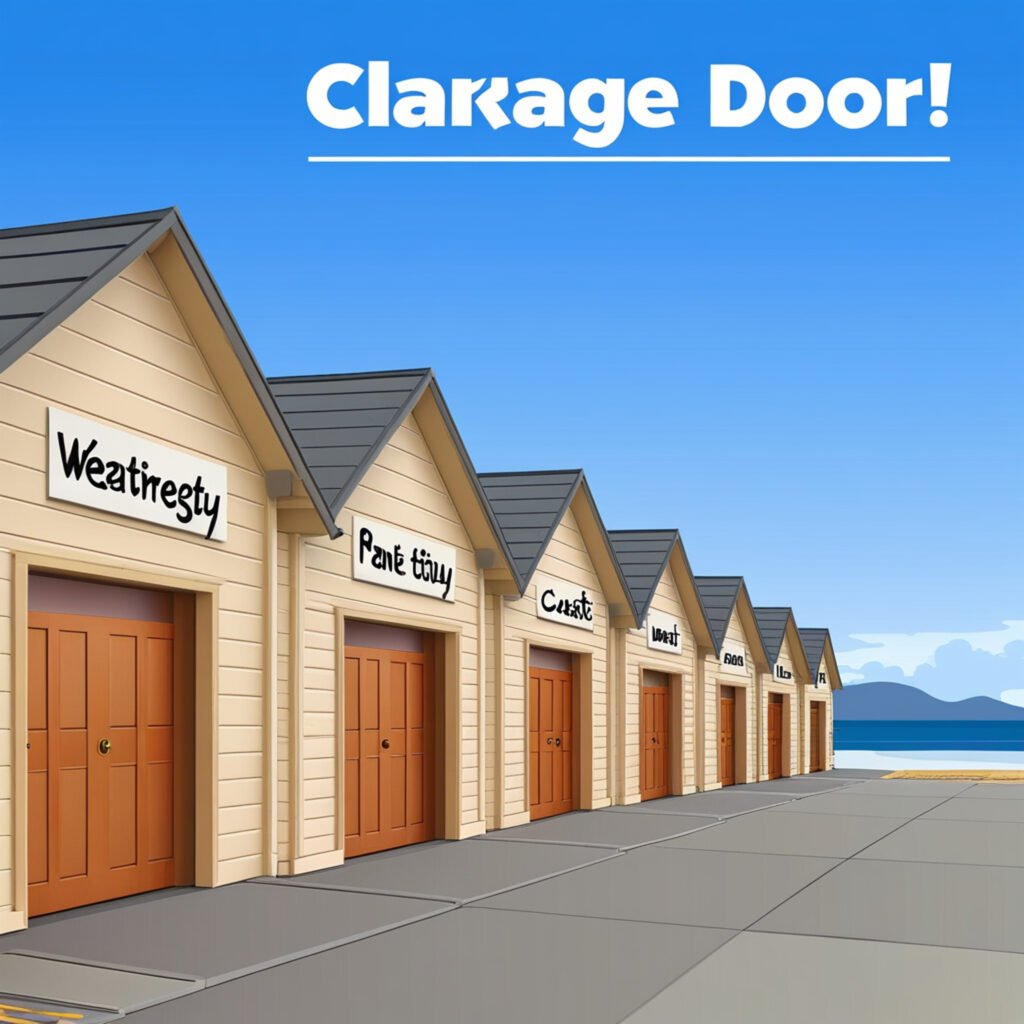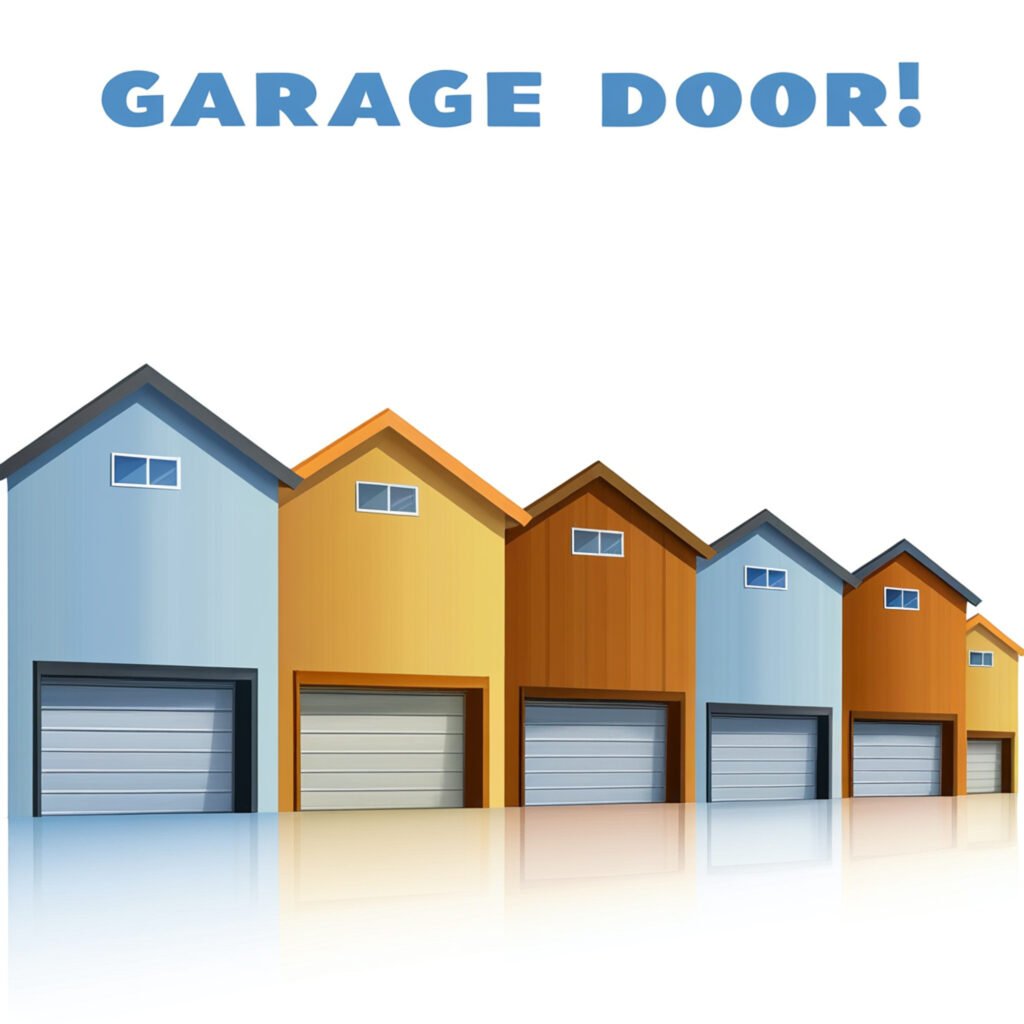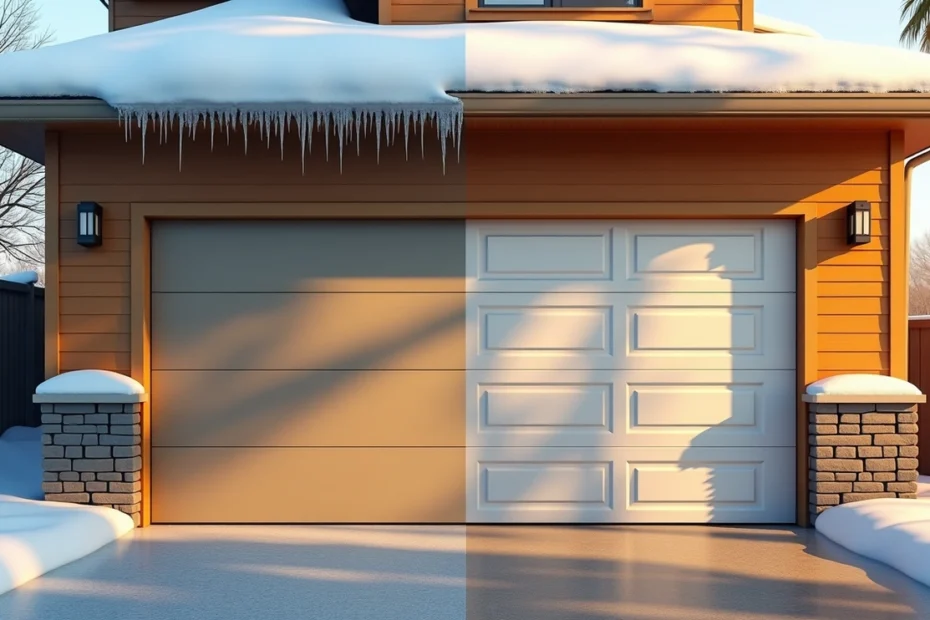The right garage door material does more than boost curb appeal—your choice substantially affects energy costs and maintenance expenses down the road. Most homeowners focus on looks first, but climate factors should really drive this major home investment decision.
Your garage door’s longevity and performance depend on picking the right material. Steel doors serve most areas well but need extra protection against rust near the coast. Wood doors shine best where moderate temperatures and low humidity prevail. The choice between fiberglass and steel becomes crucial based on your local weather patterns. Finding the perfect material for cold regions boils down to insulation properties with higher R-values.
This piece breaks down how different materials tackle weather challenges. You’ll learn about durability, insulation power, and upkeep needs. The right choice shields your home from freezing winters, brutal summers, or coastal moisture and keeps maintenance simple.
Understanding Garage Door Material Types
Homeowners must choose from many garage door materials. Each material works better in different climates and fits different lifestyle needs. Let’s look at the main types of garage door materials and what makes each one special.
Steel garage doors: durable and affordable
Steel doors are the top choice because they’re strong and won’t break your bank. These doors don’t warp, crack, or attract insects, which makes them tough enough for daily use. You don’t need much upkeep – just wash them with mild soap and water to keep them looking good.
Steel doors’ biggest advantage is their style flexibility. You can find them in many designs, from traditional raised panels to carriage house looks. They even come with wood-grain textures that look like real wood. Notwithstanding that, steel has its weak points. It can dent when hit and scratch easily. If you don’t fix these quickly, rust can become an issue.
Wood garage doors: classic but high-maintenance
Wood garage doors have a charm that nothing else matches. They insulate naturally and craftsmen can custom-make them from cedar, redwood, or mahogany. The downside is that these doors just need lots of care to stay protected from moisture.
Your wood doors will need a checkup every 12-18 months, depending on weather and sun exposure. Without proper care, warping, rotting, and pests become real problems. On top of that, wood doors weigh more than other types, which can wear out your door opener faster.
Aluminum garage doors: lightweight and modern
Aluminum doors paired with glass panels create a stunning modern look. The light construction puts less stress on door openers and resists corrosion well. These doors work great in coastal areas where salty air would quickly damage other materials.
While lighter than steel, aluminum doors stay pretty tough. Their main weakness is that they dent more easily because the metal is softer.
Composite and faux wood: low-maintenance wood look
Composite and faux wood garage doors give you the best of both worlds. They look beautiful like wood but work as well as modern materials. Built with a steel core and composite covering, these doors resist moisture, warping, and pests.
These doors’ biggest advantage is how little care they need compared to real wood. A simple wash keeps them looking fresh for years instead of regular staining and sealing. They also handle bumps and scratches better than real wood.
Fiberglass vs steel garage door: key differences
Fiberglass garage doors are basically steel doors with a fiberglass coating. Unlike steel, fiberglass won’t rust and handles saltwater corrosion better, making it perfect for humid coastal areas. The wood grain on fiberglass looks more realistic than the teak versions.
Fiberglass does have its limits. It doesn’t insulate as well as steel unless you add extra insulation. Steel provides better security and usually costs less up front than similar fiberglass options.
How Climate Affects Garage Door Performance

Your garage door’s performance depends heavily on climate conditions. The garage door, being your home’s largest moving part, faces distinct challenges based on local weather patterns.
Cold climates: insulation and durability matter
Garage door insulation becomes essential in cold environments. A well-insulated door can reduce temperature variations by up to 30 degrees in extreme weather. Doors with R-values between 4-8 provide good heat retention, and some models offer values up to 16 for maximum protection. Metal components can contract in cold temperatures and cause springs to become brittle and break. Steel doors equipped with polyurethane insulation and proper weatherproofing work best in colder regions.
Hot climates: reflectivity and UV resistance
The sun’s intense exposure damages garage doors and makes their finishes fade while components turn brittle. Uninsulated garages can reach temperatures over 100 degrees during summer. This heat causes metal brackets and rails to expand, which can throw off the safety sensors’ alignment. Hot climates benefit from light-colored or reflective finishes that reflect sunlight instead of absorbing heat. Houses in hot areas stay cooler with insulated doors that have reflective properties.
Humid and coastal areas: rust and moisture resistance
Coastal environments create the toughest conditions for garage doors since salt air accelerates corrosion exponentially. Wood components swell, warp, and rot when exposed to humidity and moisture. Aluminum and fiberglass doors work best in these locations because they resist rust and corrosion naturally. Vinyl doors also excel here – they never rust and handle moisture damage well.
Dry climates: cracking and fading concerns
Intense UV exposure combined with low humidity creates specific issues in arid environments. Materials turn brittle and develop cracks as they age prematurely. Dry heat affects wood doors the most, and they need frequent maintenance to prevent cracking. Fiberglass and composite materials handle these conditions well because they resist cracking and fading better than traditional options.
Comparing Materials by Climate Suitability

Different climate zones need specific garage door materials that can handle local weather challenges. Let’s get into which garage door material works best in your environment.
Best garage door material for cold climates
Insulated steel doors are the best choice for freezing temperatures and heavy snow. Steel doors with polyurethane foam insulation last longer in winter conditions and prevent heat loss. Doors with high R-values keep interior temperatures stable and put less strain on your garage door opener. Insulated wood doors add a timeless appeal in cold environments, but need more maintenance to prevent damage from dry-cold air.
Top picks for coastal and humid regions
Materials that can curb salt air and moisture damage are essential in coastal environments. Vinyl and fiberglass garage doors excel here and resist rust and corrosion naturally. Aluminum doors don’t rust easily, which makes them perfect for salty, humid conditions. Fiberglass doors with faux-wood finishes give coastal homeowners the wood look without maintenance hassles. Steel doors work well in these challenging environments but need special corrosion-resistant coatings.
Ideal materials for hot and sunny areas
Aluminum garage doors with glass panels work great in areas with intense sun exposure and stay cool even during summer heat. Fiberglass and vinyl doors don’t warp under extreme temperatures. Steel doors with light, reflective finishes help control heat buildup and stay cool. Whatever material you choose, doors with reflective coatings absorb less heat.
What works best in dry or high-altitude zones
UV intensity and low humidity create unique challenges in dry air and high elevation areas. Fiberglass and steel doors with UV-protective coatings resist cracking and fading in these conditions. Vinyl garage doors work great in high-altitude environments because they don’t crack from dry air. Composite doors perform well in all climates, especially when you have extreme temperature changes.
Other Factors to Consider Before Choosing
Your garage door material choice depends on more than just climate factors. Several practical aspects will affect how well the door performs and how happy you’ll be with it over time.
Insulation and energy efficiency (R-value)
The quality of insulation affects energy costs a lot, especially when you have an attached garage. R-value shows how well something resists heat flow – higher numbers mean better insulation. Most home garage doors have R-values between R-6 and R-18. Polyurethane insulation works better than polystyrene and gives R-values of 5.5 to 6.5 for each inch of thickness. Experts say you should look for doors with R-values of 10 or above for the best energy savings.
Maintenance needs by material type
Different materials need different levels of care. Steel doors are easy to maintain – just wash them now and then and check for rust spots. Wood doors need more work and require new paint or stain every 1-3 years to stay in good shape. Composite and vinyl doors last long and need little maintenance.
Customization and design flexibility
Each material gives you different design options. Wood lets you create any look you want with different types and finishes. Steel comes in many panel designs and colors. Modern homes look great with aluminum doors that have glass panels.
Cost comparison: upfront vs long-term value
The original prices vary quite a bit: steel doors cost $750-$3500, wood runs $2000-$5000, aluminum ranges from $1500-$2500, and fiberglass costs $1500-$3000. The total cost over time depends on how long the door lasts and how much care it needs.
Conclusion
The right garage door material depends on balancing climate needs with your priorities and budget. This piece shows how weather conditions substantially affect the durability, maintenance needs, and overall performance of different materials. Steel doors work best in most environments, especially when properly insulated for cold climates. Aluminum and fiberglass are your best bet in coastal regions where salt air quickly damages other materials.
Weather patterns in your area should guide this important investment. You might fall in love with a beautiful wood door at first, but it could turn into a maintenance nightmare in humid coastal areas. A cheap steel door without proper insulation will cost you more in energy bills if you live where temperatures are extreme.
R-value, maintenance needs, and design flexibility need your attention beyond climate factors. High R-values are crucial for energy efficiency, particularly with attached garages. Your commitment to regular maintenance should help you choose materials since wood needs much more upkeep than composite or vinyl options.
Upfront costs matter, but long-term value comes from picking a material that handles your specific climate challenges. Local garage door professionals can help since they know regional weather patterns and suggest the right materials. The ideal garage door combines climate compatibility, looks great, and works well – making it a reliable part of your home year after year, whatever weather comes your way.
